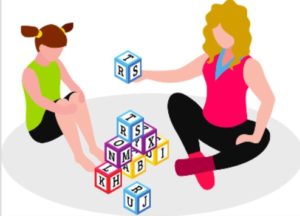Behavioral therapy is one of the most commonly used therapies for children with autism and other developmental disabilities. Applied Behavior Analysis (ABA) is a scientific approach to understanding and modifying behavior, which has been used for decades to help people with autism and other developmental disabilities, as well as behavioral problems. This article will explain how ABA works and give some information about its effectiveness in helping kids with these problems.
What Is ABA Therapy?
ABA therapy is a type of behavioral therapy that uses principles of learning theory to change or modify behaviors. It is based on the idea that people learn best through positive reinforcement and by observing and copying others. ABA therapists use this principle to help kids with autism and other developmental disabilities learn new skills and overcome problems.
ABA has been used in a range of areas such as classroom instruction, structured and naturalistic early behavioral interventions for autism, pediatric feeding therapy, rehabilitation of brain injury, and many more. It is often the first choice for behavioral treatment for autism.
Today, there are different treatments that are based on ABA principles, such as Pivotal Response Treatment (PRT) that offers a more naturalistic approach. If this seems interesting to you, you can learn more on pivotal response training and how it can help kids with autism. Besides PRT, there are other therapies that have been based on ABA principles, such as the Early Start Denver Model (ESDM) and Discrete Trial Training (DTT). Each has its own focus, but they are all based on the same underlying principles of ABA.
How Does ABA Work?
ABA therapists use a variety of techniques to help kids learn new skills and overcome problems. These techniques are based on the principles of learning theory, which include :
⦁ Reinforcement of Appropriate Behavior: We all learn best by positive reinforcement, so this is the foundation of ABA therapy. It involves giving praise and rewarding good behavior with things such as TV time or treats. Also, positive reinforcement can be given when a child attempts a new skill, even if they don’t quite succeed. This helps them to feel encouraged to keep trying.
⦁ Extinction of Inappropriate Behavior: If a child is exhibiting problem behaviors, the ABA therapist will work to extinguish these behaviors by removing any rewards that are associated with them. The hope is that these behaviors will decrease because they are no longer being rewarded.
Therapists also use shaping which involves gradually reinforcing more appropriate behavior until the child exhibits the desired skill, such as learning to use a spoon during mealtimes. Also, the therapist will break down a skill into small, manageable steps and teach them one at a time. The therapist will give the child a specific task to complete, such as putting a peg in a hole. Once the child has mastered this task, the therapist will gradually increase the difficulty of the task. Lastly, the therapist will use fading which is gradually withdrawing support as the child masters a skill. This helps the child to be able to generalize the skill and use it in different settings.
ABA therapists are specially trained professionals who use ABA principles to help kids with autism and other developmental disabilities. They can work in different settings, such as schools, clinics, or in the child’s home. ABA therapists usually have a degree in psychology, special education, or behavioral science.
To become a board-certified behavior analyst (BCBA), a therapist must graduate from an accredited university program and pass the BCBA exam. To maintain board certification, they must complete continuing education requirements throughout their career.
The Role of Parents in ABA Therapy
Besides therapists, parents play a crucial role in ABA therapy as well. Parents should reinforce the techniques taught during sessions and reward good behavior modeled by therapists. They can also help set up an environment that promotes learning and discourages problem behavior at home, such as removing things from around the house that could make it hard for kids to learn or behave properly (e.g., television, video games, junk food).
When parents are cooperative and provide a consistent home environment, it can help the child to make progress more quickly.
How To Choose The Right Approach For Your Child?
If your child has recently been diagnosed with autism or you’re considering ABA therapy for behavioral problems, you may be wondering how to choose the right approach. There is no one-size-fits-all answer, but here are some things to keep in mind:
⦁ The level of intensity: Some therapies are more intensive than others. If your child is severely disabled or has many behavioral problems, you may want to consider a more intensive approach.
⦁ The therapist’s qualifications: Make sure the therapist is qualified and has experience in ABA therapy.
⦁ The cost: Some types of therapy may be covered by insurance, so make sure to check with your plan before choosing a therapist.
⦁ The methodology: There are several different models of ABA, whether it’s a discrete trial, pivotal response treatment, or natural environment teaching. No model is better than the other – they just have slightly different approaches. You can discuss these with your therapist to determine which one will be best for your child.
⦁ Your own preferences: Consider how much time you are willing to commit to therapy, what types of environments work best for your child, and the methods that you feel most comfortable using at home.
The bottom line is: always consult with your child’s doctor and therapist before starting any type of therapy.
ABA therapy can be an effective way to modify behavior in children with developmental disabilities and behavioral problems. However, it is important that parents are cooperative for this treatment to work well. This blog has provided a guide on how ABA therapy works, what types of therapists provide this service, and the benefits and challenges associated with different approaches. If you are interested in pursuing this type of therapy for your child, always consult with his or her doctor and therapist beforehand. Hopefully, this article provided you with a bunch of useful information that can be helpful in making an informed decision.





